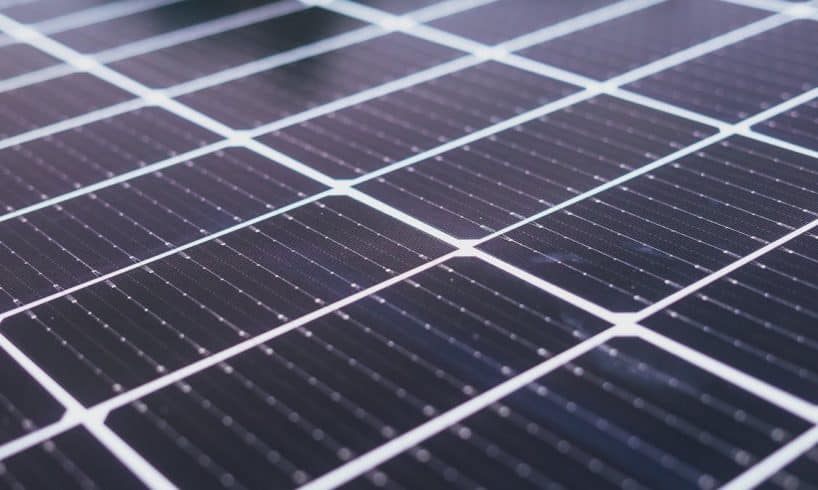
The sun’s rays are a powerful resource, and solar energy has become an increasingly popular method for harnessing that energy. With the rise of solar technology, a range of solar panels has emerged, each with its unique characteristics.
Let’s break down the main types of solar panels that are vying for attention in the market.
Monocrystalline Solar Panels
Monocrystalline panels are often regarded as the leading choice among solar panel options. Made from a single crystal structure, they exhibit high efficiency and a sleek design.
Their dark color and rounded edges make them visually appealing. They can convert about 15% to 20% of sunlight into electricity, which is impressive when compared to other types.
What makes these panels particularly noteworthy is their space efficiency. If you have limited roof space, opting for monocrystalline panels can be a wise choice.
They perform well in low light conditions, ensuring that even on cloudy days, you can still generate some power. However, they come with a higher price tag compared to other alternatives.
Polycrystalline Solar Panels
Polycrystalline panels are another popular choice, often recognized by their bluish hue. They are created from multiple crystal structures, making them slightly less efficient than their monocrystalline counterparts.
Typically, they convert around 13% to 16% of sunlight into energy.
While they are generally more affordable, polycrystalline panels require a bit more space for the same amount of energy output. However, they tend to perform better in high-temperature conditions.
If you’re considering installing a system in Utah, these provo solar panels could be a cost-effective and reliable option for balancing efficiency with budget.
If you’re in a hotter climate, this characteristic can be quite beneficial. Although they may not be as sleek as monocrystalline panels, many homeowners find their performance and cost-effectiveness appealing.
Thin-Film Solar Panels
Thin-film solar panels are a lightweight and flexible option. They are made by depositing photovoltaic material onto a substrate, which can be a variety of materials, including glass or plastic.
What sets thin-film panels apart is their versatility; they can be integrated into various surfaces, including building materials and rooftops.
However, efficiency is where thin-film panels face challenges. They usually convert about 10% to 12% of sunlight into usable energy.
While they may not be the best choice for residential rooftops due to space limitations, they shine in applications where flexibility and low weight are essential. For instance, they are often used in portable solar chargers and large-scale solar farms.
Bifacial Solar Panels
Bifacial solar panels are an innovative option, designed to capture sunlight on both sides. This technology allows them to harness reflected sunlight, enhancing overall energy production.
With the ability to increase output by up to 30%, bifacial panels can be a game-changer for solar installations.
When installing bifacial panels, the placement becomes crucial. They perform best in areas with reflective surfaces, like white roofs or light-colored ground.
While they can be initially more expensive, the potential for higher energy production may justify the investment. As solar technology evolves, bifacial panels are gaining traction among residential and commercial users.
Building-Integrated Photovoltaics (BIPV)

BIPV panels are a unique blend of solar technology and architectural design. These panels are integrated directly into building materials, such as windows, facades, or roofs. This integration allows for a seamless aesthetic while generating electricity.
The efficiency of BIPV systems can vary widely based on the specific application and design. They are appealing for new constructions or renovations, where traditional panels might not be feasible.
However, the costs can be significantly higher than conventional solar panels, which may deter some homeowners.
Concentrated Photovoltaics (CPV)
Concentrated Photovoltaics (CPV) represent a specialized approach to solar generation. These systems use lenses or mirrors to focus sunlight onto small, highly efficient solar cells.
This technology can achieve efficiencies above 30%, but it requires direct sunlight and a clear line of sight to the sun.
CPV systems are best suited for large-scale solar farms in regions with abundant sunlight. They perform poorly in cloudy conditions and require intricate tracking systems to follow the sun’s path.
While the technology is fascinating and efficient, the upfront costs and space requirements may limit its use in residential settings.
Comparison of Solar Panel Types
When choosing a solar panel, it’s essential to weigh the pros and cons of each type. Monocrystalline panels offer high efficiency and space-saving designs, but they are pricier.
Polycrystalline panels provide a more affordable option with slightly lower efficiency and performance in high temperatures.
Thin-film panels excel in their flexibility and lightweight nature, but their lower efficiency limits their use in residential installations. Bifacial panels shine in reflective environments but require careful installation.
BIPV systems combine aesthetics and functionality, but they may be a stretch for budget-conscious homeowners. Finally, CPV systems are incredibly efficient but are best suited for large-scale applications.
Factors to Consider When Choosing Solar Panels
Several factors come into play when deciding on the right solar panel for your needs. The first consideration is the available space. If roof space is limited, high-efficiency options like monocrystalline panels may work best.
Budget is another critical element; while some panels may offer better performance, they can also come with a hefty price tag.
The local climate also plays a role. Areas with high temperatures might benefit from polycrystalline or thin-film panels, while regions with consistent sunlight could maximize output with bifacial or CPV systems.
Lastly, consider your home’s aesthetic preferences. BIPV and monocrystalline panels often align with modern design sensibilities, while thin-film panels offer a more unconventional look.
The Future of Solar Panel Technology
As solar technology continues to advance, new types of solar panels are on the horizon. Innovations in materials and efficiency promise to enhance performance and reduce costs.
Emerging technologies, such as perovskite solar cells, are gaining attention for their potential to provide high efficiency at a lower price.
Moreover, the shift toward sustainability is driving research into solar materials that can be produced with a reduced environmental impact.
As awareness of climate change grows, the demand for clean energy sources will likely lead to further innovations in solar technology, making it an exciting time for the industry.
By understanding the differences among the various types of solar panels, homeowners can make informed choices that align with their energy needs and goals.
Whether prioritizing space efficiency, cost-effectiveness, or innovative designs, there’s likely a solar panel option that fits the bill.







